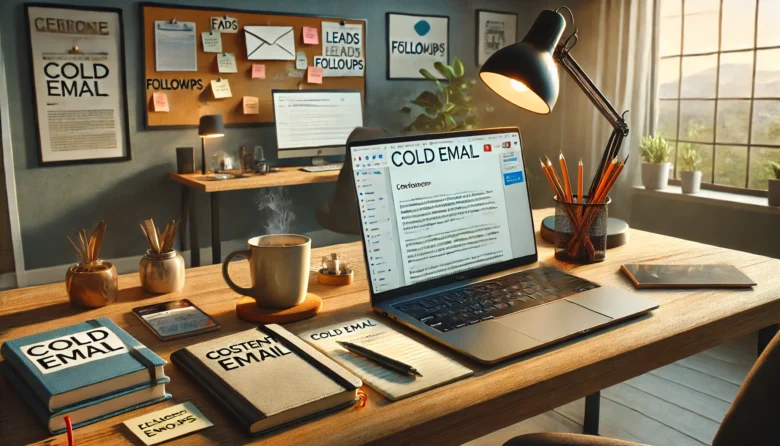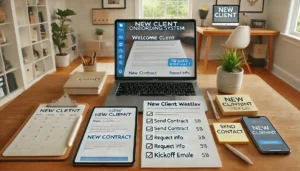For many freelance writers, the idea of cold emailing feels awkward or intimidating. Reaching out to strangers, trying to “sell yourself,” and facing potential rejection isn’t exactly fun. But when done right, cold emailing is one of the most powerful tools for landing quality freelance clients—especially when you’re just starting or want to escape low-paying platforms.
The key isn’t to send hundreds of emails randomly. It’s about crafting targeted, thoughtful, and professional messages that show potential clients how you can help them. Let’s break it all down step by step.
Understand What Cold Emailing Really Is
Cold emailing isn’t spam. You’re not blasting the same message to everyone. Instead, it’s about making a personalized introduction to a business or person who could benefit from your writing skills.
Unlike applying to job boards where you’re one of many applicants, cold emailing puts you directly in front of decision-makers. It shows initiative and confidence—traits clients often respect.
Step 1: Identify Your Ideal Client
Before writing a single email, be clear about who you want to work with. Ask yourself:
- What industries am I interested in? (e.g., tech, wellness, finance)
- What size businesses do I want to approach? (startups, agencies, established brands)
- What kind of content do I want to create? (blog posts, newsletters, web copy)
Once you have clarity, create a list of potential businesses or individuals that fit your target.
Step 2: Find the Right Contact Person
You want your email to land in the inbox of someone who can actually hire you—usually a content manager, marketing director, founder, or editor.
Here’s how to find them:
- Visit the company’s “About” or “Team” page
- Search on LinkedIn: “[Company Name] + Content Manager”
- Use tools like Hunter.io or RocketReach to find professional emails
- If unsure, email a general inbox (like hello@company.com) but address a specific person by name if possible
Step 3: Write a Clear, Personalized Subject Line
Your subject line determines whether your email gets opened. Avoid salesy language like “Great offer for you” or “Hire me now!”
Instead, try:
- “Quick question about your blog content”
- “Loved your recent article—had an idea for you”
- “Freelance writer available for [industry] projects”
Make it relevant and human, not clickbait.
Step 4: Craft a Short, Value-Packed Email
Less is more. Your cold email should be brief, relevant, and focused on what you can do for them—not your life story.
Structure:
- Personal opener – Mention something specific about their company (e.g., a recent blog post, product launch).
- Who you are – A quick sentence on your expertise and niche.
- What you can offer – Focus on benefits (“help you publish consistent SEO-friendly content,” etc.).
- Proof – Link to your best 1–2 samples or portfolio.
- Call to action – Suggest a next step: a quick call or email response.
Example:
Hi Sarah,
I read your recent blog post on sustainable skincare—great insights! I’m a freelance writer specializing in health and wellness content, and I help brands like yours engage readers and boost visibility through optimized blog posts.
Here are two samples of my work: [link] and [link].
Would you be open to a quick call or email chat about your content needs?
Best, [Your Name]
Step 5: Add a Professional Signature
Don’t forget your signature. It should include:
- Your full name
- Your title (e.g., Freelance Health Writer)
- Your website or portfolio link
- LinkedIn profile
- Contact info (email, phone optional)
This adds legitimacy and makes it easy for them to learn more about you.
Step 6: Follow Up (Politely)
Most people won’t respond to your first email—and that’s normal. A polite follow-up 5 to 7 days later can double your chances of a reply.
Keep it simple:
Hi Sarah, just following up on my previous email about helping with your blog content. Let me know if you’re interested—I’d love to support your team!
You can send up to two follow-ups. If there’s no reply, move on and keep building your pipeline.
Step 7: Track Your Outreach
Use a spreadsheet or tool like Notion, Trello, or Streak (a CRM that works with Gmail) to track:
- Who you emailed
- When you sent it
- When you followed up
- Any replies or notes
This helps you stay organized and see what’s working over time.
Step 8: Refine and Repeat
Cold emailing isn’t a one-and-done effort. It’s a process. Over time, you’ll learn which subject lines get the most opens, what kind of samples resonate, and what industries are most responsive.
Track your results and refine your approach. With consistency, your cold emails can become a steady stream of high-quality freelance opportunities.
Final Thoughts: Cold Emailing is a Skill—Master It
Cold emailing doesn’t have to feel sleazy or scary. When done with sincerity and strategy, it becomes a professional, respectful way to connect with people who genuinely need your help.
It’s not about convincing anyone to hire you—it’s about showing the right people what you can do, and letting your value speak for itself.
So grab your list, craft that first message, and hit send. Your next great client could be one email away.



